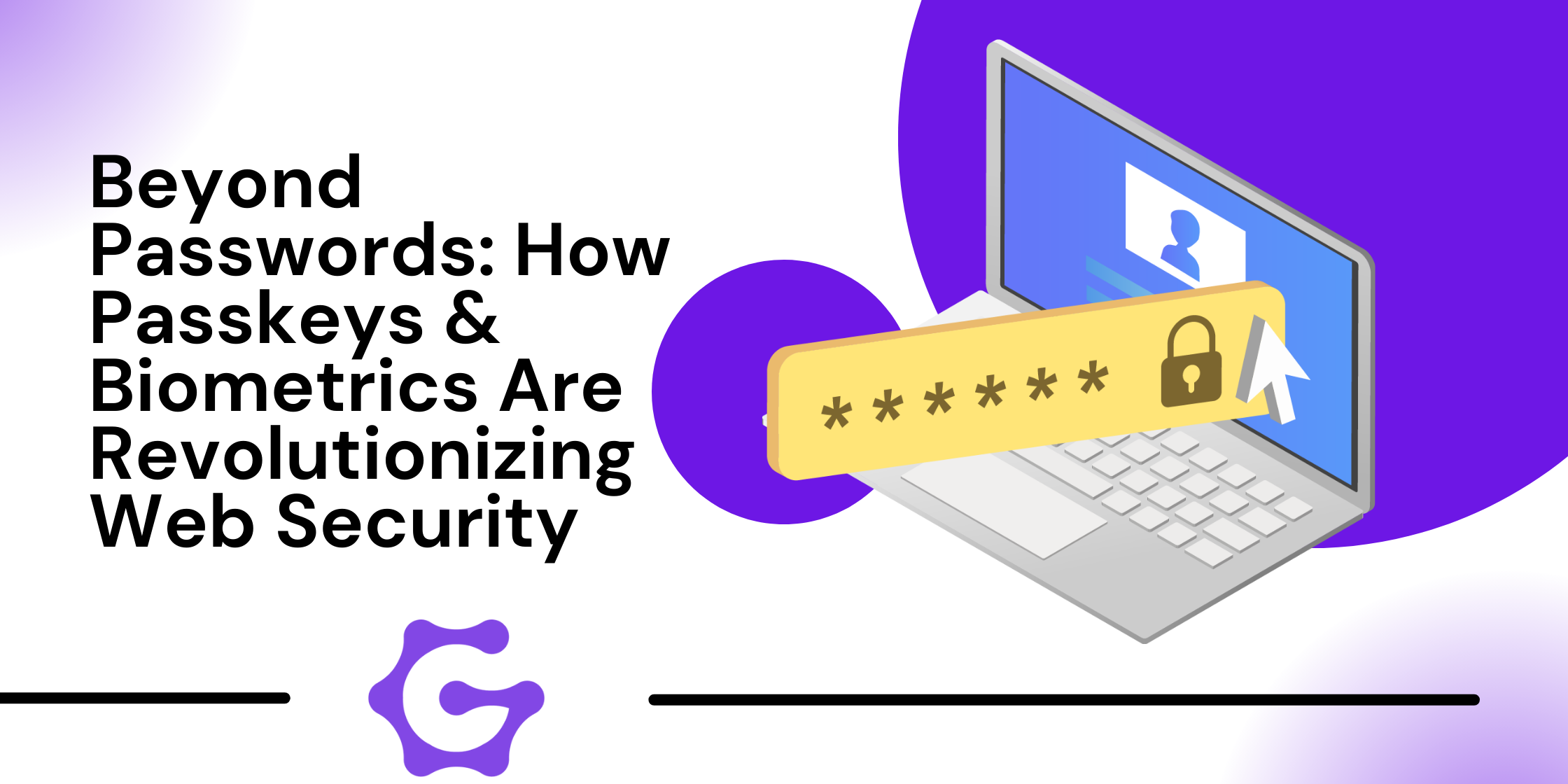Beyond Passwords: How Passkeys & Biometrics Are Revolutionizing Web Security 100% 24

For decades, passwords have been the gatekeepers of our online lives. But let’s be honest—they’re a hassle. Weak passwords get hacked, strong ones get forgotten, and the sheer number of logins we manage is overwhelming. Cybercriminals know this, which is why credential-related breaches remain a top security threat.
Enter passkeys and biometrics, two innovations that are changing the authentication landscape. They promise not just better security, but also a more seamless user experience. The shift away from traditional passwords is already happening, and businesses that fail to adapt may soon find themselves left behind.
The Problem With Passwords
The flaws in password-based authentication are well-documented. According to Infosec, 81% of hacking-related breaches involve weak or stolen passwords. Users reuse passwords across multiple sites, making them vulnerable to credential stuffing attacks. Even when businesses enforce strong password policies, phishing scams can still trick people into giving away their credentials.
Password managers help, but they don’t solve the core issue: passwords are inherently risky. That’s where passkeys and biometrics come in.
What Are Passkeys?
Passkeys are a passwordless authentication method developed by major tech players like Apple, Google, and Microsoft. They replace traditional passwords with cryptographic key pairs, which offer a more secure way to verify identity.
Here’s how they work:
- When a user creates an account or logs in, their device generates a unique cryptographic key.
- One part of the key is stored on the user’s device, while the other is stored on the website or service they’re accessing.
- Authentication happens automatically without the need for a typed password, reducing phishing risks.
Since passkeys are tied to physical devices, they are much harder to steal than traditional credentials. Even if a hacker gains access to an email or phone number, they won’t be able to log in without the device that holds the passkey.
Biometrics: A Game-Changer for Authentication
Biometric security—think fingerprint scanners, facial recognition, and even iris scans—has been steadily gaining traction. Unlike passwords, biometric data is unique to each individual, making it significantly harder to replicate or steal.
Take Apple’s Face ID or Android’s fingerprint authentication. These systems provide a seamless login experience without requiring users to remember anything. But biometrics go beyond convenience—they also significantly reduce fraud. In fact, financial institutions using biometric authentication have reported a 70% decrease in fraud-related losses.
However, there are challenges. Biometric data, once compromised, cannot be changed like a password. This makes secure storage and encryption critical. Companies implementing biometric authentication must ensure they are using advanced encryption techniques to protect this sensitive data.
The Future of Authentication
With passkeys and biometrics gaining momentum, the future of authentication looks passwordless. Tech giants are already leading the charge, integrating passkey support into major platforms. Apple’s iCloud Keychain, Google’s passwordless login options, and Microsoft’s Windows Hello are all pushing the industry toward a future where passwords become obsolete.
For businesses, this shift means rethinking security strategies. Adopting passkeys and biometric authentication not only strengthens security but also enhances the user experience. Customers expect frictionless interactions, and clunky password systems are becoming a thing of the past.
Final Thoughts
Passwords are on their way out, and for good reason. They are a security liability and a usability nightmare. Passkeys and biometric authentication offer a future where logging in is safer, faster, and phishing-resistant. Businesses that embrace these technologies now will be ahead of the curve—offering customers security without the headache of managing yet another password.
The transition is already happening. The question is, will you keep up?